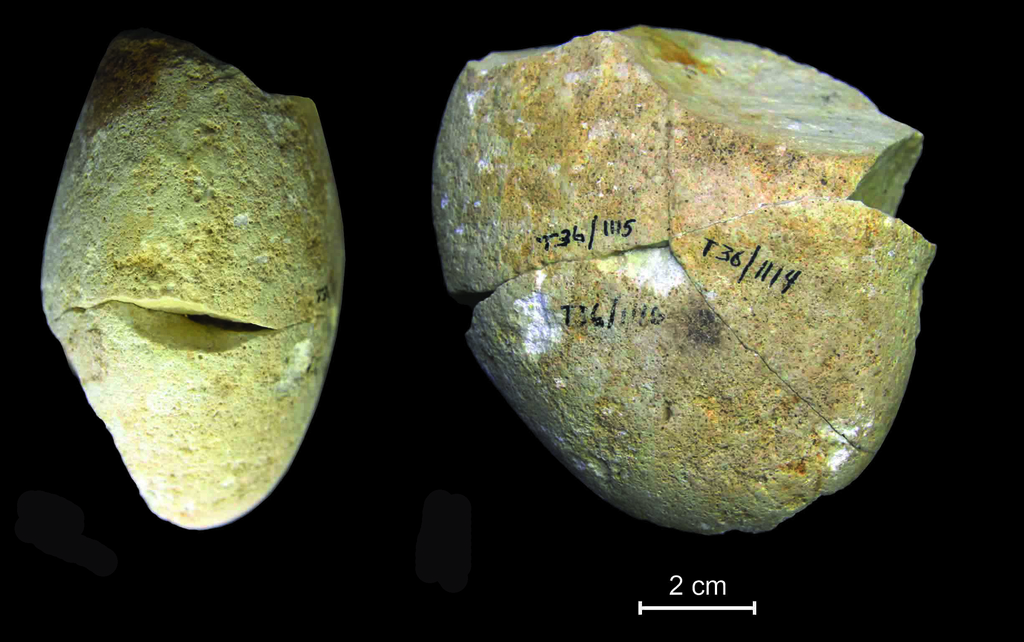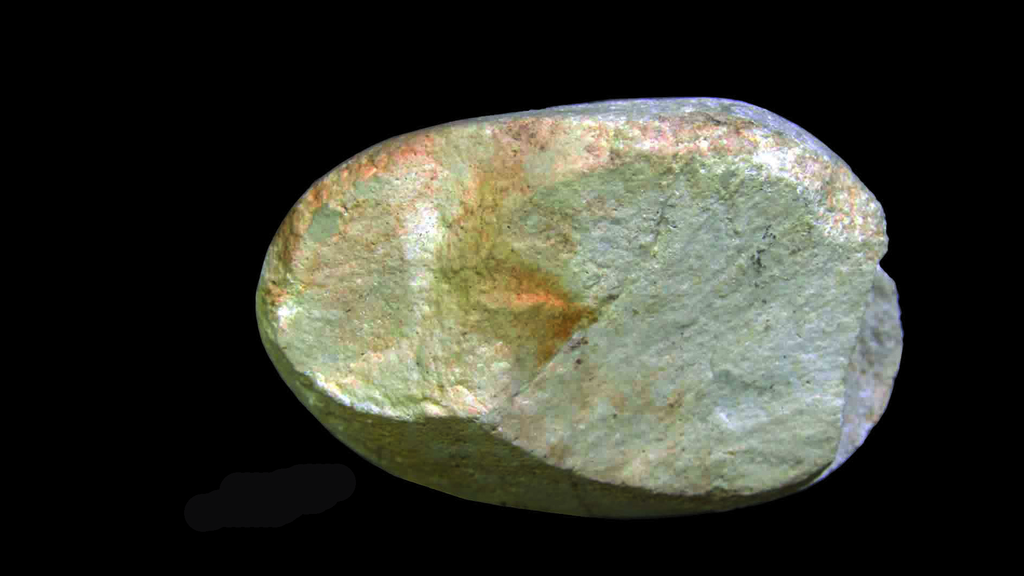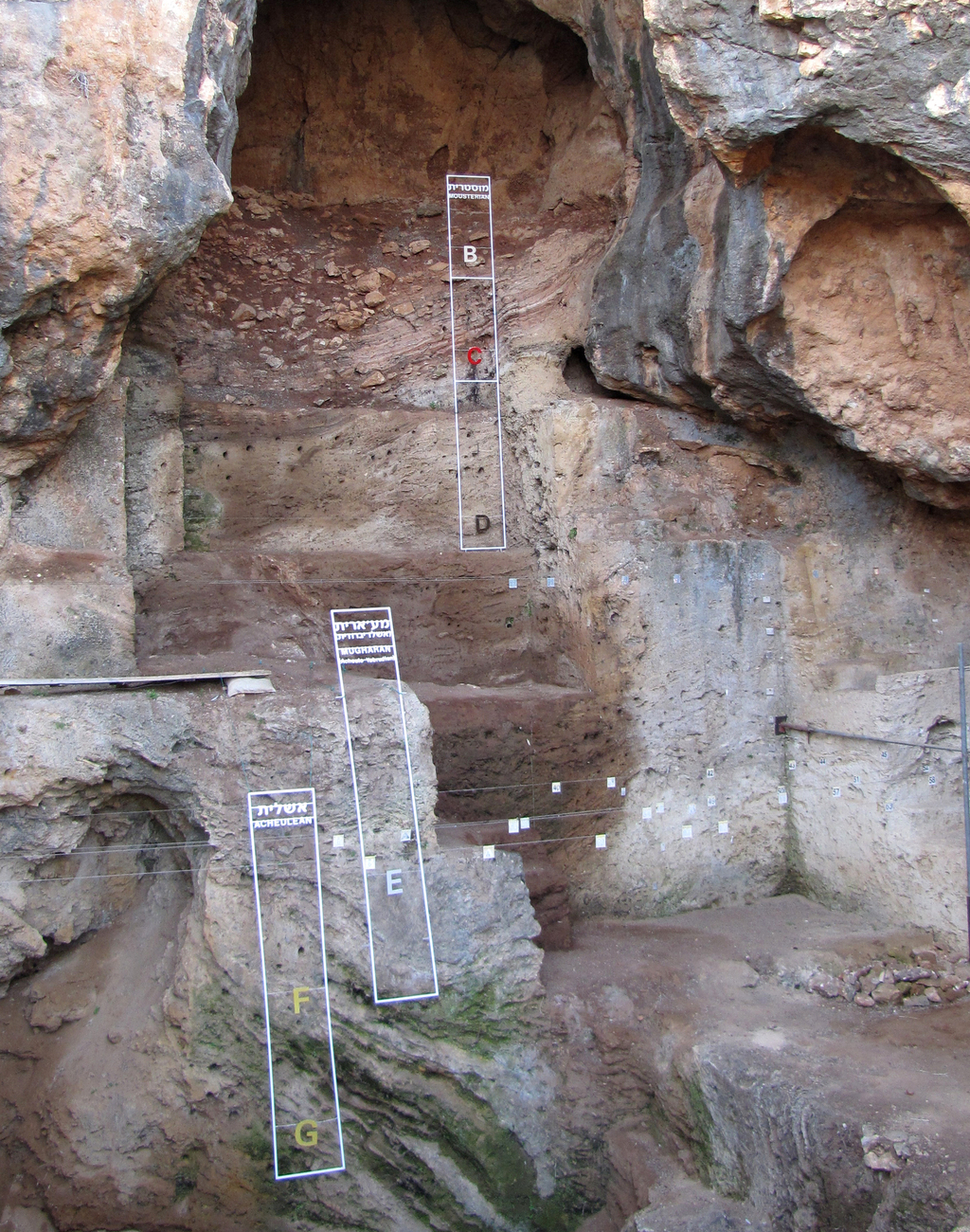During excavations at Tabun Cave in the western Carmel region, archeologists encountered what could be the oldest evidence of hominins [primate species regarded as human, directly ancestral to humans, or very closely related to humans] using grinding tools.
They found cobble bearing traces of mechanical alterations similar to those recorded on grinding tools. However, the artifact derives from the early layers of the Acheulo-Yabrudian complex of the late Lower Paleolithic (ca. 350 ka), predating any other evidence for grinding or abrasion by 150,000 years and even humans (homo sapiens).
3 View gallery


Cobble used by ancient primates as grinding tool discovered in Tabun Cave
(Photo: Dr. Iris Groman-Yaroslavsky)
The tool was excavated from the UNESCO World Heritage Site in the Carmel mountain range in the 1960s but its purpose was only recently made clear after a review by University of Haifa's Dr. Ron Shimelmitz, Dr. Iris Groman-Yaroslavsky, Prof. Mina Weinstein-Evron and Prof. Danny Rosenberg.
"This discovery from the Tabun Cave shows that hominins processed different materials through abrasion about 350,000 years ago,” the researchers said.
“The emergence of this technology joins additional behavioral changes recently identified… Illustrating the growing and diversifying capabilities of early hominins to harness technology to shape their environment.”
Scientists conducted a detailed use-wear analysis of the cobble and implemented an experimental program to determine whether the traces on the artifact can be attributed to purposeful human action, gaining positive results for the hypothesis of purposeful human practice.
“We found many similarities to the signs of abrasion obtained as a result of grinding animal skins, from this, we concluded that the ancient stone was used to grind soft materials, although we do not yet know which exactly,” said Dr. Groman-Yaroslavsky.
The researchers argued that the significance and novelty of early abrading technology is that it marks a new mode of raw material manipulation - one that is categorically different from other modes of tool use observed among earlier hominins or other primates and animals.
The emergence of this technology joins additional behavioral changes recently identified and attributed to the Middle Pleistocene, illustrating the growing and diversifying capabilities of early hominins to harness technology to shape their environment.



